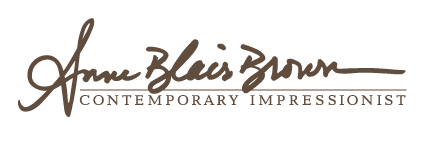I consider myself fortunate to have a myriad of artists with whom to paint, talk art, critique, etc. At a recent gathering with fellow plein air painters, the question came up as to what to do with the plein air “duds”. Some propose selling them on eBay, burning them, or coating with gesso and moving on.
The question arises, what constitutes a “bad” painting? I think sometimes the “bad” is in our minds. I know first hand that the art demons can creep into our heads and tell us that not only did we lose our way with this one...it stinks. Just stinks.
The knee-jerk reaction to the not-so-perfect painting can include scraping, wiping, placing in studio purgatory for years, or using it as kindling or a frisbee. I invite you to consider the fact that it may not be as bad as originally perceived.
To work through the “perceived” dud paintings I first just sit with them for awhile. I try not to paint on them, and I remind myself that a painting created from life and in the moment often still has charm even if it isn’t museum-ready perfection. It’s a shame when we noodle them back in the studio and lose the freshness and spontaneity. Having said that, sometimes a fresh eye and 3 brushstrokes are in fact the remedy, but only if you can have the restraint not to carry it too far.
In plein air painting we have a scant amount of time to capture fleeting light, and I’m no stranger to a hastily planned composition. When I find myself in possession of a poorly designed painting, I lay it on my studio floor, grab various sizes of frames, and place them over parts of the painting that I think work (I also do this with errant studio paintings). 8 out of 10 times I end up with a nice little cropped gem.
At the very least, often the alleged dud painting can simply be used as inspiration for a larger studio painting. After all, I got out there in the elements and did the hard work to create a study, so why not assess what does work and use that information? I recently employed this notion, and the end result became an award winning painting. Glad I didn’t give up.
Why is it so hard for us to see the good first? I know personal baggage creeps in to our art lives...it is simply too difficult to separate. But maybe if we pat ourselves on the back more for trying and for gaining the mileage necessary to learn, we can let ourselves off the hook. Instead of the pursuit of perfection, instant gratification, and recognition, we could focus more on the wonderful journey of exploration and growth. Everything falls into place after that, in my opinion.


